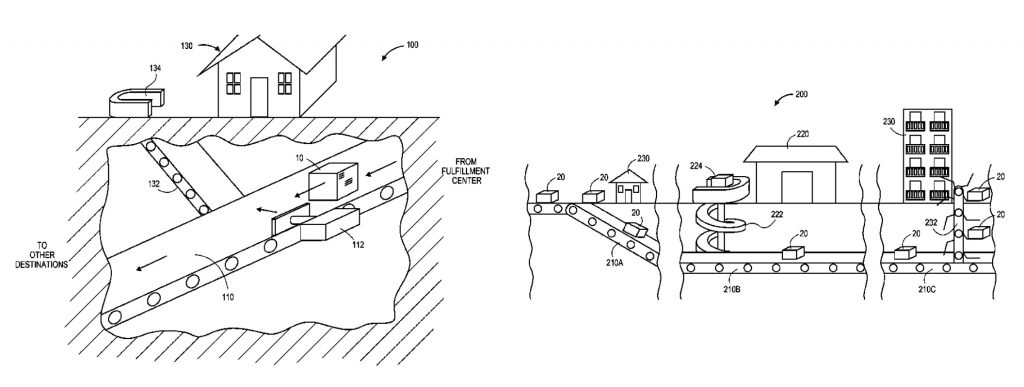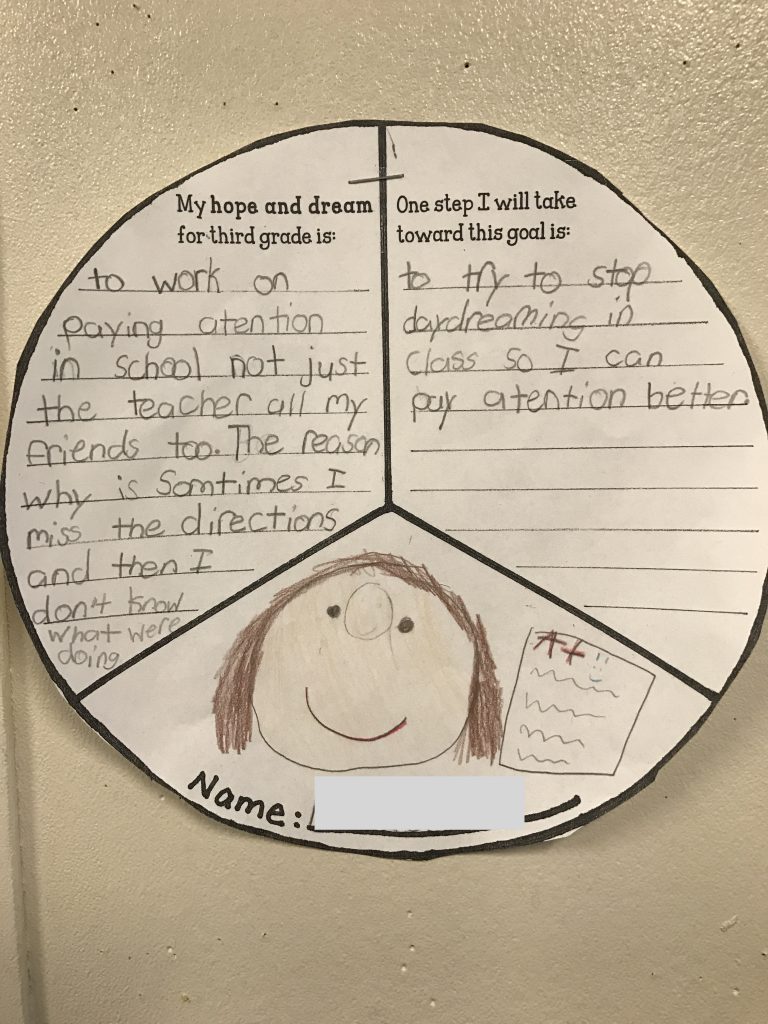My daughter turns 9 this weekend and earlier this week I visited her third grade class to see what she and her classmates have been working on this year. This pie chart pinned on the wall caught my attention, where each student shared their hope and dream for third grade and one step they will take toward achieving this goal. Here’s what my daughter wrote:
Daydreaming runs in the family. It’s what my father did when he worked in the sugarcane fields in Cuba and dreamed of escaping poverty. It’s what I did when I worked in a small cubicle and dreamed of being my own boss someday (and what I continue to do as I dream about disrupting myself, about helping to find a cure for type 1 diabetes, about finally writing that book in my head).
So, dream on, baby, it’s what we do. Dream on and see where it takes you. It’s my birthday wish for you.
Moving on, here’s the supply chain and logistics news that caught my attention this week:
- Amazon is granted a patent for using a subterranean network to deliver packages (GeekWire)
- Uber debuts Movement, a new website offering access to its traffic data (TechCrunch)
- UPS Acquires Freightex Ltd.
- Target invests in Minneapolis start-up that helps retailers monitor supply chains (Star Tribune)
- Trump recommits to ‘major border tax’ on foreign-produced U.S. products (Reuters)
- Federal Judge Deals Swift Transportation Legal Setback (WSJ – sub. req’d)
- USDOT Announces New Federal Committee on Automation
- Alphabet Inc.’s Self-Driving Car Unit Creates Its Own Sensor Package (WSJ – sub. req’d)
- Container Cargo Imports Surged at End of 2016 (WSJ – sub. req’d)
- November 2016 Freight Transportation Services Index (TSI)
Speaking of daydreaming, Amazon was back in the news this week for another patent issued, this one for delivering goods via a dedicated network of underground tunnels. Here’s the abstract from the patent along with a diagram:
A dedicated network delivery system may avoid congestion experienced by traditional transportation networks and enable the delivery of objects from an origin to a destination using one or subterranean or above ground elements. The network delivery system may be specifically configured to transport a particular type of object, such as an item, or a parcel or container having one or more items therein, in both vertical and horizontal directions along one or more of such elements, and in one or more item carriers such as carts, bags or boxes. The elements may be driven by or along one or more conveyors or rails, and may comprise one or more pressure-controlled carriers within a vacuum environment or among any type of fluid, including liquids or gases. A path between the origin and destination may be defined based on any factor, including travel time or cost, and any actual or predicted congestion.

If Amazon has serious plans of realizing this idea, there’s already a company in the UK called Mole Solutions that has been working on creating “underground freight pipelines” since 2002. Check out it’s video gallery, including this one showing its demonstrator site in operation:
Just like Amazon acquired Kiva Systems to accelerate its use of robots in the warehouse , acquiring Mole Solutions could also accelerate its R&D efforts to create underground freight pipelines.
Of course, as with so many things Amazon daydreams about (and patents), there are a million reasons why it wouldn’t work. But Amazon is like Jim Carrey in this famous scene from “Dumb and Dumber”:
If there’s a chance, however remote, why not get excited and try?
Moving on to third-party logistics (3PL) news, UPS announced the purchase of Freightex, a U.K.-based asset-light provider of truckload, less-than-truckload, specialized and refrigerated over-the-road services. Here’s an excerpt from the press release:
Shippers of all sizes and industries today rely on Freightex for the efficient movement and visibility of goods across the U.K. and Europe every day. Freightex also routinely handles freight from shippers who require temperature-controlled, specialized, and other types of customized equipment. The company has eight locations across the U.K. and Europe and uses an asset-light model to match customers’ outgoing freight shipments with available trucking capacity in its network of carriers.
On the one hand, you have the big guys getting bigger in the 3PL industry (see “Is the 3PL Industry Becoming Barbell-Shaped?”), on the other hand you have the likes of Amazon and Uber looking to disrupt the freight brokerage industry with technology. If you’re a 3PL stuck in the middle, how do you compete and grow in the years ahead? That’s the question many 3PLs need to ask themselves and figure out an answer quickly before they become either completely commoditized or irrelevant.
Finally, underscoring one of my predictions for 2017 — that companies will get more serious about eradicating slavery and conflict minerals from their supply chains — the StarTribune reports that Target Corp. has invested in Inspectorio, a firm that focuses on helping retailers keep closer tabs on factories through inspections and data analysis. According to the article:
Inspectorio, founded a year ago by three brothers, helps retailers by digitizing what has often been pen-and-pencil inspection reports as well as by using a platform to help retailers bring more data science to monitoring supply chains.
“They have a lofty purpose and ambition about bringing transparency to the supply chain and sourcing world,” said Casey Carl, Target’s chief strategy and innovation officer. “That aligns very well to our approach and philosophy around where we want to take our sourcing practices and making sure we are doing everything within our power to build up trust and credibility and to pass that on to consumers.”
And with that, keep daydreaming and have a happy weekend!
Song of the Week: “Dream On” by Aerosmith










